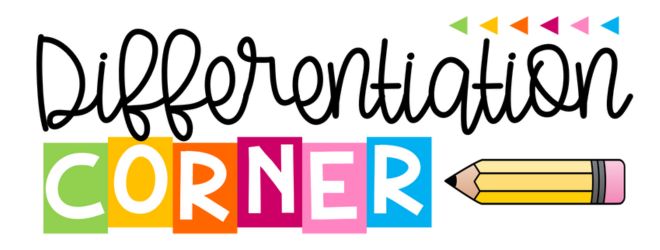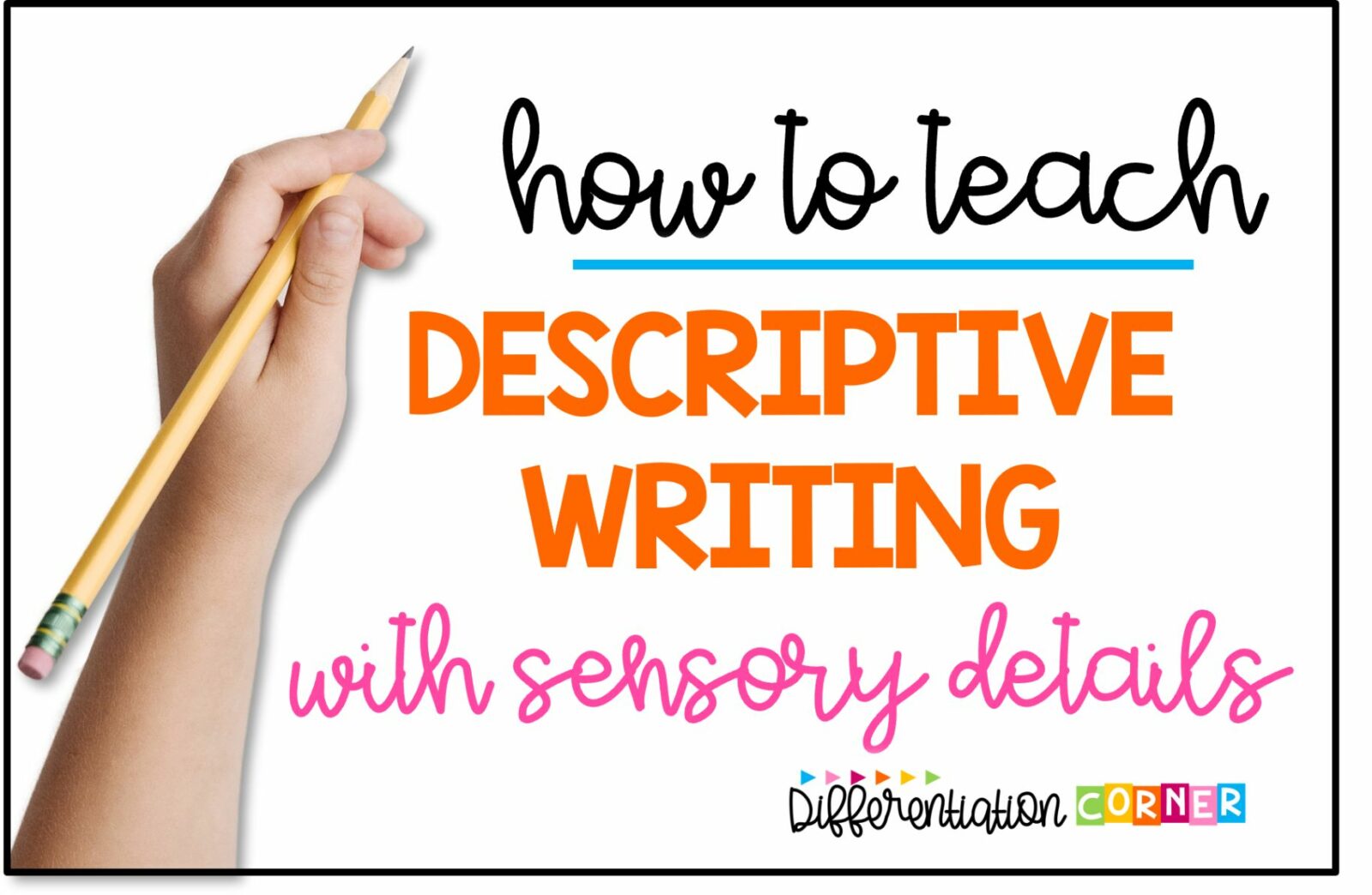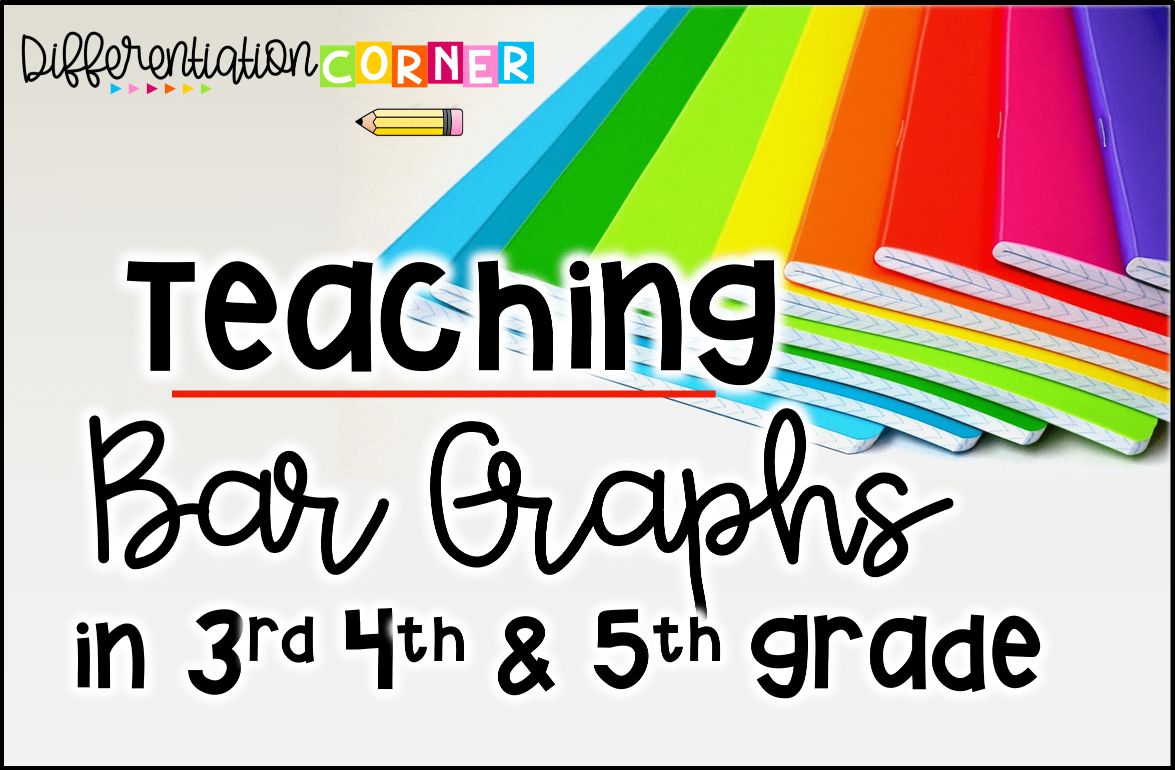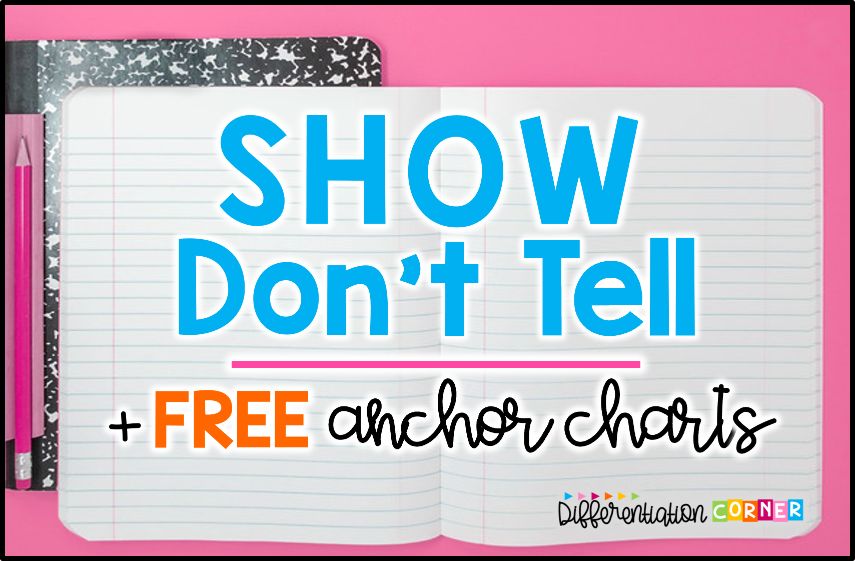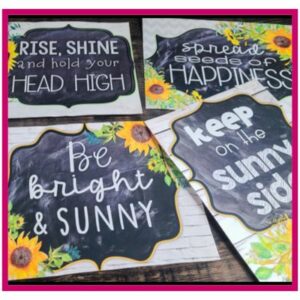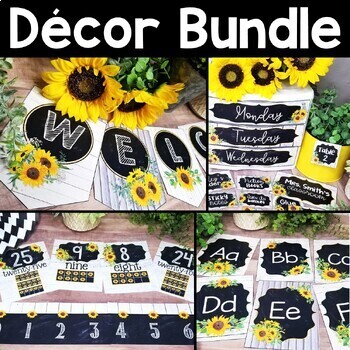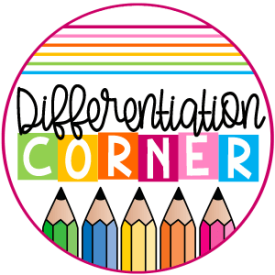Teaching students how to write descriptively or to write with imagery is SO important, and can be SO overwhelming! Descriptive writing isn’t just for narrative writing. Using descriptive writing can empower students with new strategies and help them to enjoy writing by letting their creativity flow and capturing their audience’s attention. If your students are writing simple sentences and boring stories, this blog post with a few descriptive writing lesson plan activities can help!
What is the Purpose of Descriptive Writing or Writing with Imagery
Descriptive writing is a strategy used to describe a person, place or thing so that a picture is created in the reader’s mind and add depth to a piece of writing. Writers often use the five senses to describe the details in their writing to make it more interesting and engaging for the reader. Students can also include adjectives and adverbs and figurative language to make their writing more descriptive and more enjoyable. Descriptive writing can be used in both fiction and nonfiction.
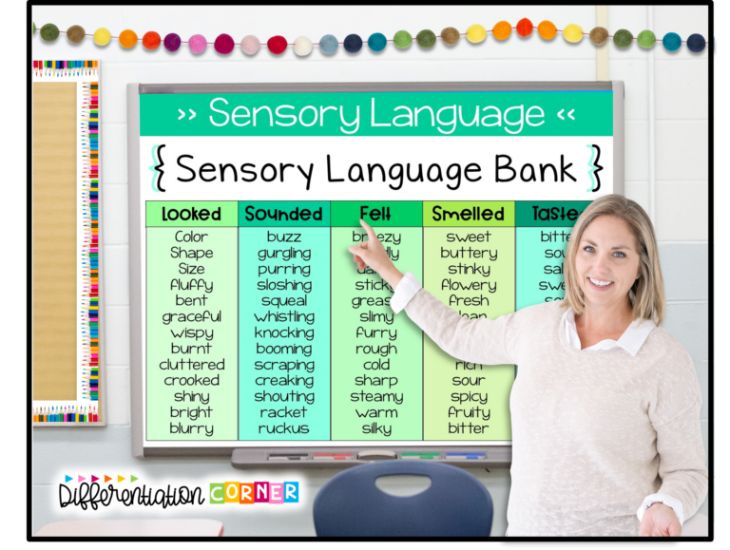
Why do we teach Descriptive Writing?
- Writing descriptively gives students gets students to think critically about a topic, story or event, and then analyze it and then be creative with their thoughts.
- It give students’ strategies to make their writing more interesting to read.
- It helps students use build vocabulary by using new words in meaningful context.
- It encourages students to use new techniques like figurative language.
- It improves students’ ability to understand and recognize different writing techniques by other authors in their vivid descriptions.
How to Teach Descriptive Writing
There’s so many ways to teach descriptive writing to kids! It is a skill that needs to be taught with lots of modeling. Students develop and strengthen vivid descriptive writing over time with a lot of practice and support. Keep reading for ideas to provide opportunities for students to use this type of author’s craft!
Focus on Sensory Details
Sensory words describe what wee hear, see, taste, smell and feel. By using our five senses, readers are better able to visualize what the author is saying. Using sensory details helps the reader connect to the text better by being able to almost experience the situation or feel more real. The good news is that the five senses are taught early on in school, so by the time students are ready to include sensory language in their writing they are already familiar with the idea.
Step 1: Start With Mentor Sentences
For example, I begin by writing on the board a really boring sentence like, “The dog walked.” Then I ask the students to close their eyes and picture the sentence. Then I ask the students questions like:
- What color of dog did you picture?
- Was it’s fur short or fluffy?
- Where was this dog?
- Was it barking or panting?
- Did the dog stink?
- How was the dog walking? Was it prancing or moseying?
Your class will notice that none of them had imagined the same thing! They’ll be shocked! I love this part.
Try a few more boring sentences!
“We went in the water.”
- Was the water freezing cold? Warm and refreshing?
- Could you hear the waves?
- Was it an ocean, a pond, a lake, a bathtub?
- Was the water dark and muddy? Or crystal clear and blue?
- Was the water deep?
“Sami rode her bike.”
- What color was her bike?
- How fast was she going?
- What did it sound like? Did she have a bell she was ringing?
- Could you hear the tires spinning?
- Was she laughing with a friend? Or breathing heavily because she was nervous to ride for the first time without training wheels?
Then we discuss the importance of adding details so we can all get an accurate account of what is happening.
Step 2: Make a Sensory Details Anchor Chart
Then I move to creating an anchor chart listing sensory details as a whole group. We make five columns, one for each of the five senses and list as many sensory words and details as we can fit on the chart. I always have a list printed out and hidden on my desk in case we get stuck and I need to prompt students.
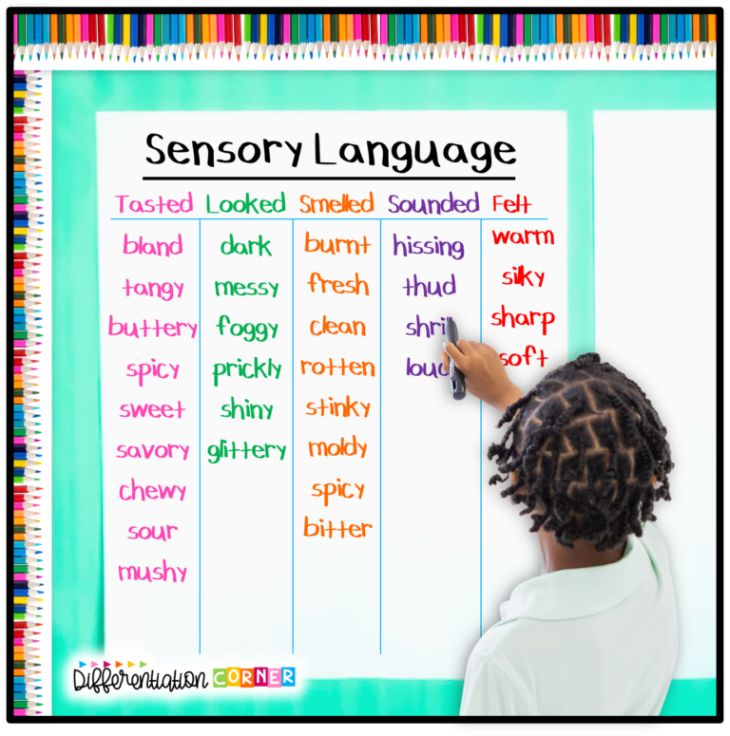
Step 3: Revisit Your Mentor Sentences and Revise
Time to fix up those boring, simple sentences and use that sensory language! Chances are you will need to turn one sentence into a paragraph. As a whole group, go through each mentor sentence and model how to add elaboration with some of the sensory language your class came up with on your sensory details anchor chart.
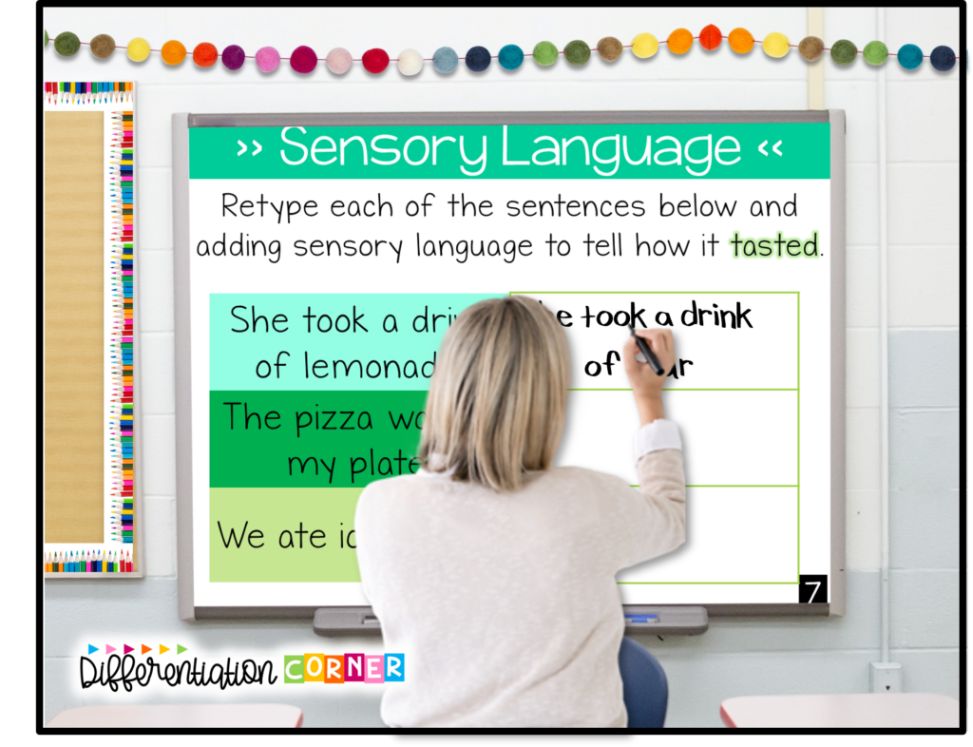
More Ideas to Practice and Develop Descriptive Writing
Use Picture Writing Prompts
Funny photo writing prompts will definitely get your kids’ creativity flowing for descriptive writing! These Narrative Writing Prompts with photos are kid approved topics like video games, friends, pets, funny animals and more! Your students will get excited about writing with these photo writing prompts! No prep is needed for the writing prompts, just print and go!
Each prompt has a photograph with a checklist of elements specific to narrative writing. Language used is directly from Common Core Writing Standards for 3rd, 4th and 5th grade!
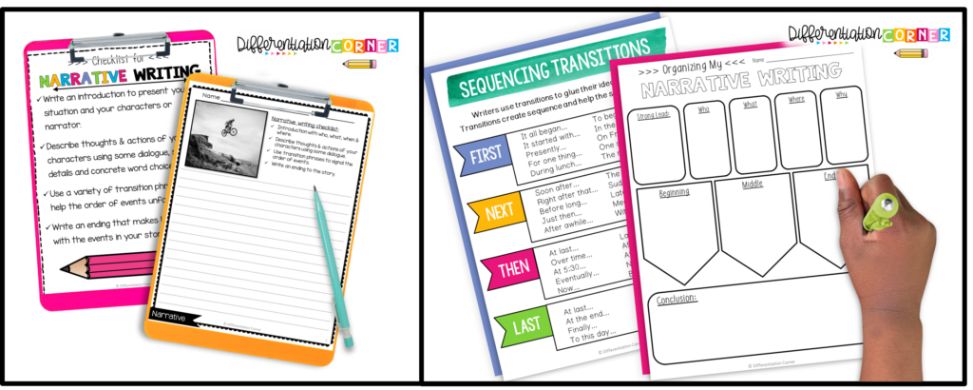
Included in this resource:
- Teacher tips for each prompt
- 20 Narrative Writing Prompts
- Narrative Transitions Anchor Chart & Narrative Writing Checklist Anchor Chart (color & BW)
- Narrative Graphic Organizer
Revise Boring Sentences To Add Imagery and Sensory Language
Give students seed sentences to grow into detailed sentences with sensory details. I have them write one and then share their sentences outloud to the whole class or with a partner. This would make a great literacy center too!
No time to make your own! I got you. These Google Slides have 3 sensory details anchor charts built in for student reference and multiple sentences for students to practice writing with imagery!
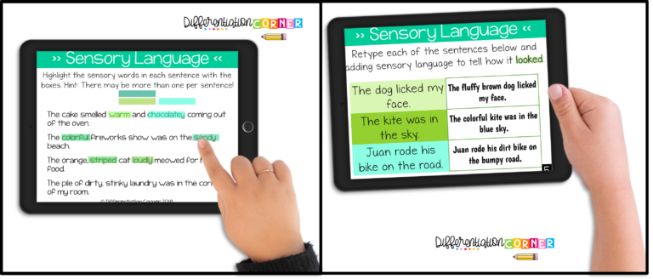
Descriptive Paragraph Writing Practice From a Question Prompt
This resource has lots of descriptive writing prompts for your students to explore writing with sensory language. It is my go to set of Google Slides to teach descriptive writing because of the anchor charts that support students while they work independently.
Sensory Words Sort or Identify Sensory Words
Present students with a list of sensory language words to sort into the correct category of the five senses! Here’s the catch! Some of them can go into multiple categories. I always have students use it in a sentence if they have a different opinion about where a word should go than I do.
No time to cut out and manipulate the words? Have students use a different color crayon or highlighter to mark each sense. Words that describe how something looks get colored yellow. Words that describe how something sounds get colored blue. You get the idea!
Busy? Want to have it done for you? This resource has it ALL! You’ll love it! The slides have drag and drop sensory words ready to be sorted. Some slides have lists of words ready with translucent boxes students can use to “highlight” words that would describe each of the five senses.
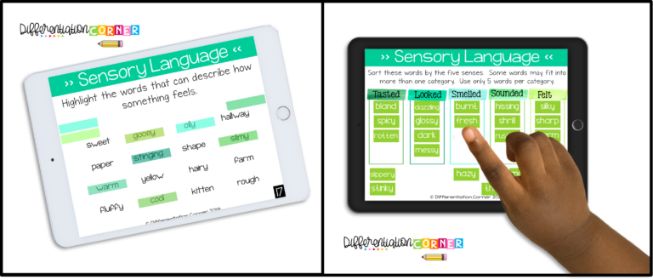
Writing can be such a challenge to teach in elementary. Check this out for teaching using quotation marks in dialogue. You don’ want to miss these ideas for teaching stretching sentences! I really hope you and your students enjoy descriptive writing! Are there any other descriptive writing activities you use in your classroom?
